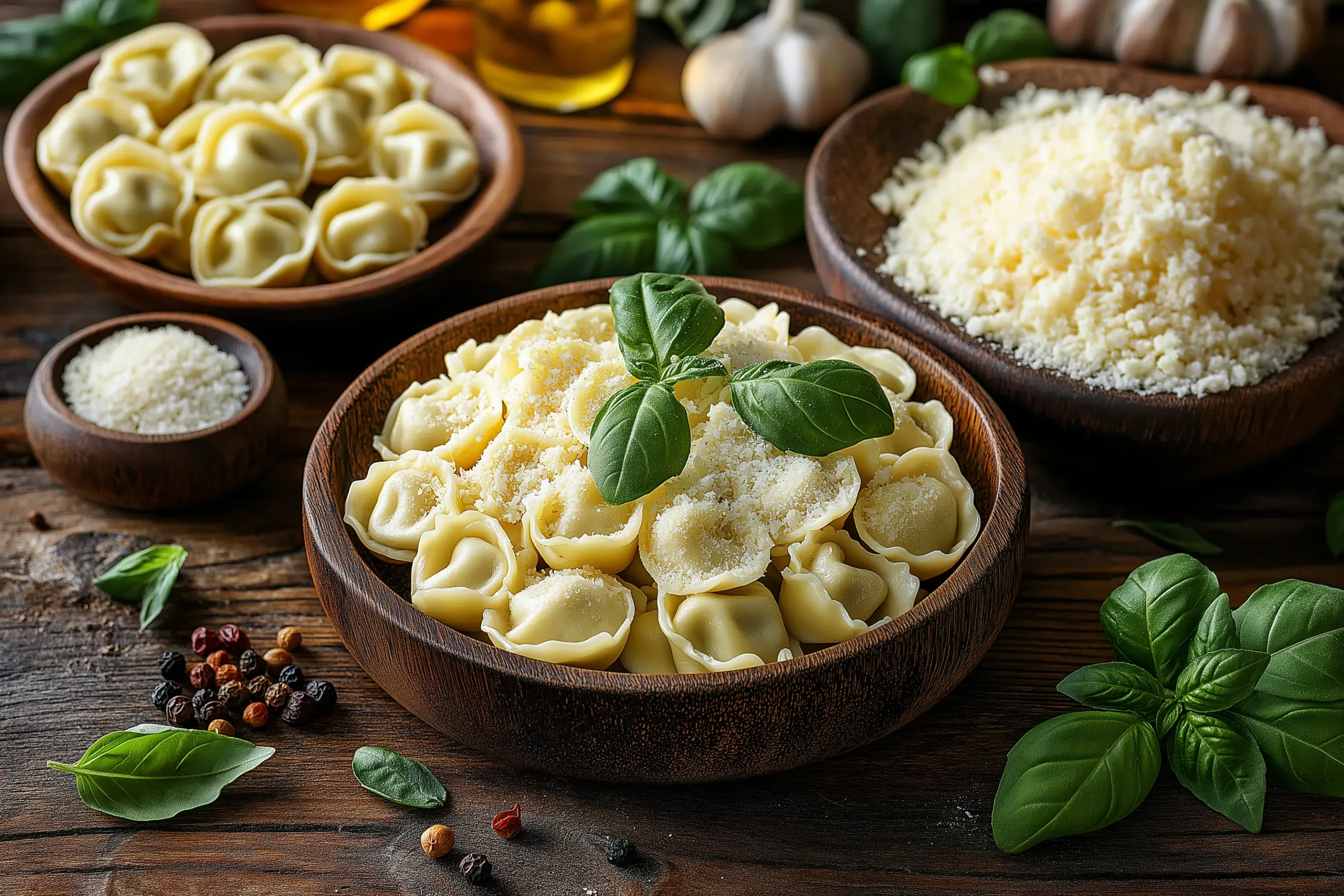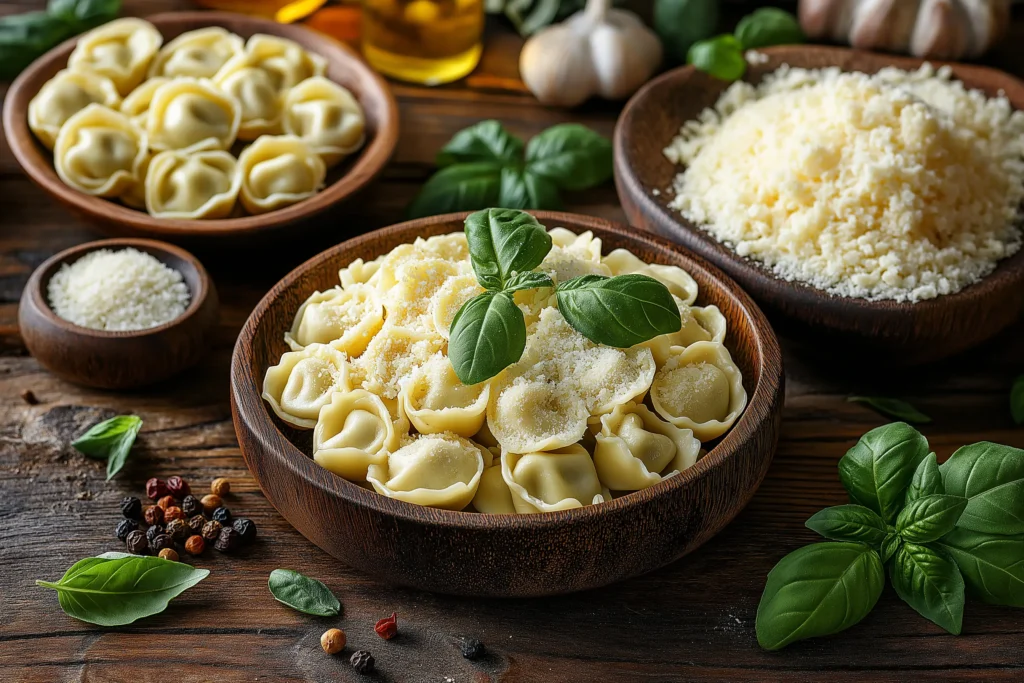
Have you ever stared at a menu or grocery aisle, puzzled by whether to choose tortellini or tortelloni? It’s like deciding between twins who share the same DNA but have distinct personalities. If you’ve wondered what sets these two Italian pasta icons apart, you’re not alone. Let’s dive into their delicious world and clear up the mystery!
Introduction to Tortellini and Tortelloni
Pasta is the heart and soul of Italian cuisine, and tortellini and tortelloni are two of its crown jewels. Both are stuffed pasta, but they each bring their own flavor, size, and history to the table. So, what makes them so special?
The Origins of Tortellini and Tortelloni
Let’s start with where it all began. Tortellini hails from the Emilia-Romagna region of Italy, specifically Bologna and Modena, the same culinary heartland that gave us Parmigiano-Reggiano and balsamic vinegar. Tortelloni, its larger counterpart, shares a similar heritage but has roots in slightly different parts of Northern Italy.
Fun fact: Legend has it that tortellini was inspired by the navel of Venus, the Roman goddess of love. Romantic, isn’t it? ❤️
Why the Confusion? Understanding the Basics
Here’s the thing: Tortellini and tortelloni look incredibly similar at first glance. Both are folded pasta with fillings, and their crescent shapes can make even the most seasoned pasta enthusiast hesitate. But if you look closer—and taste them—you’ll see they’re as different as night and day.
“Think of tortellini and tortelloni like siblings. They share a family resemblance but have unique traits that make them stand out.”
Tortellini and Tortelloni comparison: What’s the Difference?
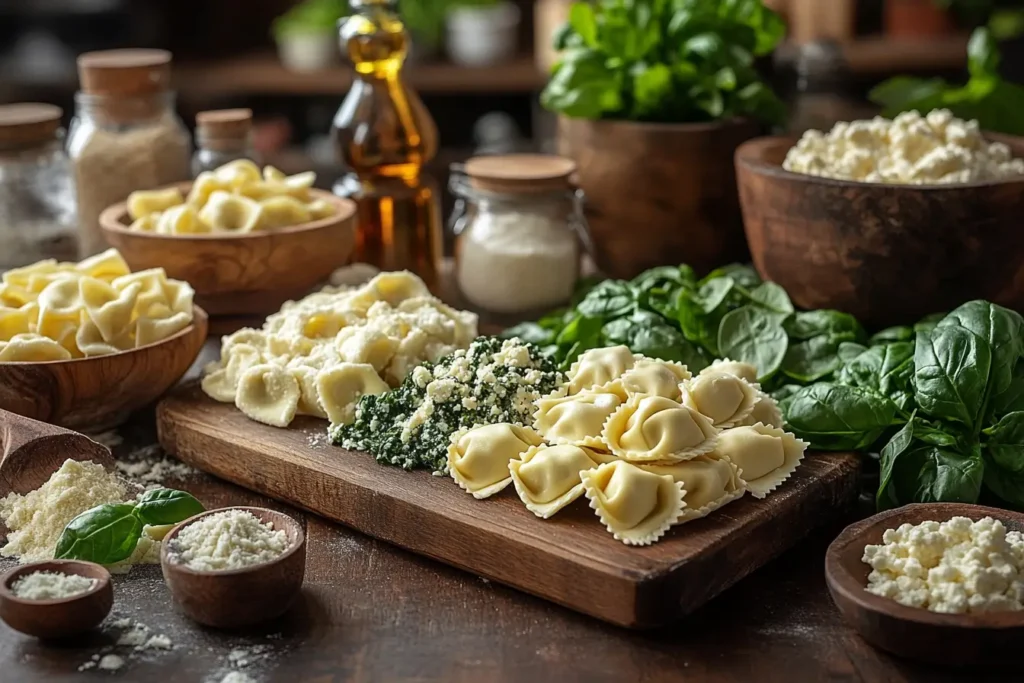
Let’s break it down piece by piece, so you’ll never mistake one for the other again.
Size and Shape Variations
Size matters when it comes to these pasta pockets. Tortellini are petite and delicate, often described as “bite-sized,” while tortelloni are significantly larger. Think of tortellini as an appetizer and tortelloni as the main course—it’s all about proportion!
Differences in Filling
This is where their personalities truly shine. Tortellini traditionally feature a savory filling like cheese, prosciutto, or mortadella. Tortelloni, on the other hand, are known for their vegetarian-friendly fillings, like ricotta, spinach, or pumpkin. They’re the kind-hearted cousin at the pasta table.
Traditional Serving Methods
Here’s another key difference: how they’re served. Tortellini is often enjoyed in a light broth (brodo), making it a comforting dish perfect for chilly nights. Tortelloni, however, loves to swim in rich sauces like butter and sage or tomato-based delights. It’s the pasta equivalent of a cozy sweater versus a night-out dress.
Regional and Cultural Influences
Cultural nuances also play a role. Tortellini is considered more of a festive dish in Italian households, often appearing during Christmas or special occasions. Tortelloni, being larger and heartier, is perfect for family gatherings where everyone is hungry for more.
A Closer Look at Tortellini
Now that we’ve skimmed the surface, let’s dive deeper into what makes tortellini the star it is today.
Traditional Recipes and Fillings
Tortellini fillings are a masterclass in simplicity and flavor. Classic combinations include a mix of finely minced pork, prosciutto, and Parmesan. You’ll often find these little gems wrapped in silky pasta dough, creating a perfect bite every time.
How It’s Made: Step-by-Step Process
Ever tried making tortellini from scratch? It’s like a culinary meditation. First, you roll out the dough paper-thin. Then, cut it into small squares, dollop the filling, and fold it with precision. Finally, you shape each piece into a tiny ring, like a chef’s edible artwork.
“Making tortellini is like crafting a tiny gift—you’re wrapping joy in pasta!” 🎁
Popular Tortellini Dishes Around the World
Although traditionally Italian, tortellini has made its mark globally. In the US, it’s often tossed with creamy Alfredo sauce or stuffed with unexpected flavors like spicy sausage. While purists may shudder, it’s proof that tortellini can adapt to any table.
A Closer Look at Tortelloni
Don’t worry, tortelloni lovers—your favorite pasta deserves its moment in the spotlight too.
Traditional Recipes and Fillings
Tortelloni fillings tend to lean vegetarian, with ricotta and spinach reigning supreme. Some variations include seasonal ingredients like pumpkin or mushrooms, making it a celebration of the land’s bounty.
How It’s Made: Step-by-Step Process
Making tortelloni is like creating a mini masterpiece. The process is similar to tortellini, but the pieces are larger, allowing for more filling and a more forgiving folding process. It’s beginner-friendly yet just as impressive!
Popular Tortelloni Dishes Around the World
Tortelloni shines in dishes that let its flavors take center stage. Imagine it draped in brown butter and sage, topped with a sprinkle of Parmesan. Hungry yet? 😋
Common Misconceptions About Tortellini and Tortelloni
When it comes to tortellini and tortelloni, a lot of myths and misunderstandings swirl around like pasta in boiling water. Let’s set the record straight and debunk some common misconceptions.
Are They Interchangeable in Recipes?
You might think you can swap tortellini for tortelloni in any recipe, but it’s not always that simple. Tortellini’s small size makes it ideal for broths and light sauces, while tortelloni thrives in creamy or rich, hearty sauces. Using them interchangeably can disrupt the balance of your dish.
Think of it like using a teaspoon when the recipe calls for a ladle—it’s just not the same!
How Marketing Has Contributed to the Confusion
Let’s blame some of this mix-up on marketing. In stores, you might see “tortellini” labels slapped on products that are technically tortelloni. Why? It’s all about familiarity—tortellini is a more recognized name. Unfortunately, this adds to the confusion and leaves many people scratching their heads at dinner time.
Cooking and Serving Tortellini vs. Tortelloni
If you’ve ever overcooked your pasta or paired it with the wrong sauce, you’re not alone. Here’s how to get it right every time.
Pairing Sauces with Tortellini and Tortelloni
When it comes to sauces, think of tortellini and tortelloni as two divas with distinct preferences.
- Tortellini: Loves light and flavorful pairings. Broths, delicate butter sauces, or even simple pesto bring out the best in its savory fillings.
- Tortelloni: Demands richness. Pair it with tomato-based sauces, brown butter, or even creamy Alfredo to complement its hearty, often vegetarian fillings.
Pro Tip: “Sauces are like accessories for pasta—choose the wrong one, and the whole outfit falls apart!” 👗🍝
Tips for Perfect Cooking
Cooking these pasta pockets isn’t rocket science, but a few small missteps can lead to disaster. Follow these tips for perfection:
- Boiling: Use plenty of salted water to prevent sticking.
- Timing: Tortellini cooks faster (3–5 minutes), while tortelloni might take a bit longer (5–7 minutes) due to its size. Don’t rely on the clock alone—taste-test for that al dente texture.
- Draining: Avoid rinsing your pasta after draining—it strips away the starch that helps sauce stick. Instead, save a little pasta water to blend into your sauce for extra flavor.
Nutritional Differences Between Tortellini and Tortelloni
Wondering how these two compare nutritionally? While both are indulgent treats, there are some differences worth noting.
Caloric Content and Serving Sizes
Since tortelloni is larger and often filled with rich ingredients, it tends to pack more calories per piece. Tortellini, being smaller, is slightly lighter in calorie count per serving. That said, portion control is key—you don’t want to turn a delightful meal into a carb overload.
Comparing Ingredients
- Tortellini: Commonly includes meat fillings, making it higher in protein but potentially higher in fat and sodium as well.
- Tortelloni: Often features vegetable-based fillings, which can be lower in fat and calories but still satisfying thanks to the creamy ricotta.
If you’re watching your diet, opt for tortelloni with a light sauce, or try whole-grain pasta options for a healthier twist.
Common Problems and Solutions in Preparing Tortellini and Tortelloni
Even seasoned chefs can hit a few snags when making or cooking stuffed pasta. Here’s how to solve the most frequent issues.
Preventing Overcooking or Undercooking Tortellini and Tortelloni
Overcooked tortellini turns mushy, while undercooked tortelloni can be chewy and unappetizing. The trick? Start testing your pasta a minute before the package’s suggested cooking time. It should be firm to the bite—aka al dente.
Ensuring Proper Filling in Tortellini vs Tortelloni
Ever had pasta that seemed like it was all dough and no filling? That’s often a result of poor preparation. When making these at home, use a piping bag or small spoon to place an even amount of filling in the center. This ensures a balanced bite every time.
Choosing the Right Cooking Method for Tortellini and Tortelloni
Your pasta’s side dishes can make or break the meal. Pair tortellini with a crisp green salad or garlic bread for a lighter touch. Tortelloni pairs well with roasted veggies or a hearty meat dish. It’s all about balance—like the yin and yang of Italian cuisine. 🥗🍷
“Cooking pasta is like composing a symphony—every element needs to work together to create harmony.”
How to Choose Between Tortellini and Tortelloni for Your Dish
Still can’t decide which one to pick for dinner tonight? Let’s break it down.
Factors to Consider: Occasion, Flavor Profile, and Meal Type
- Occasion: For a casual weeknight meal, tortelloni’s larger size and rich sauces make it a comforting option. For a formal dinner or festive occasion, tortellini’s elegant presentation in broth can elevate the meal.
- Flavor Profile: Craving something savory? Go for tortellini with a meat-based filling. If you’re in the mood for something earthy and hearty, tortelloni’s vegetarian fillings are perfect.
Expert Tips for Selecting the Right Pasta
- If you’re serving kids or guests who prefer smaller portions, tortellini is the way to go.
- For a family-style meal where everyone digs in, tortelloni’s larger size makes it easier to share.
Traditional Recipes and Creative Twists
When it comes to tortellini and tortelloni, tradition meets innovation in the kitchen. Whether you’re a die-hard fan of classic recipes or an adventurous cook looking to spice things up, these pasta pockets are versatile enough to satisfy every palate.
Classic Tortellini in Brodo
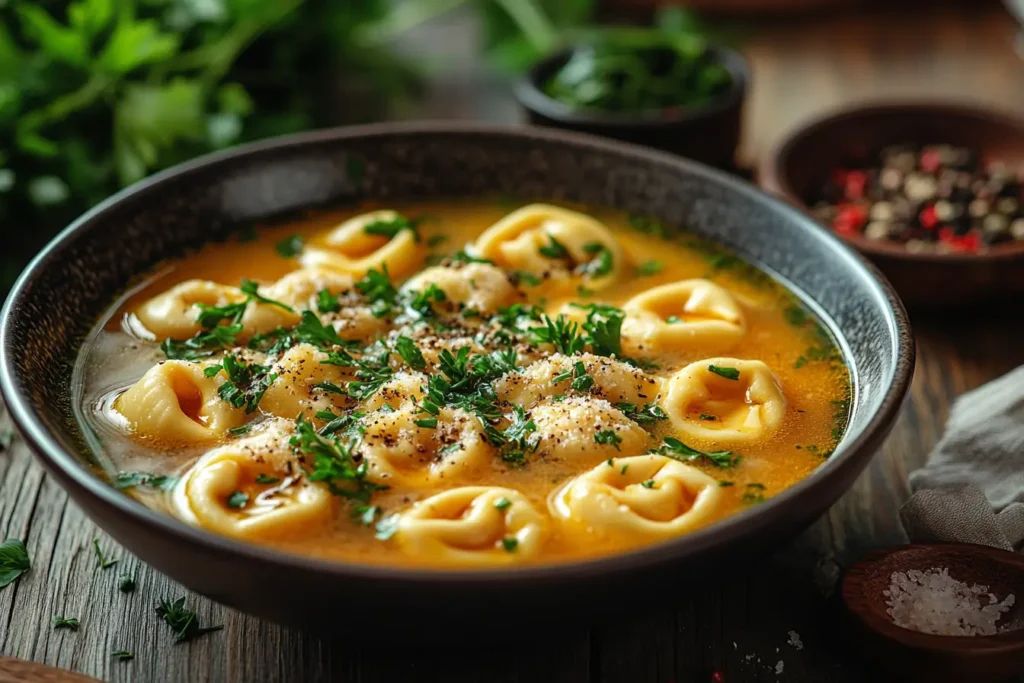
Nothing says Italian comfort food quite like a warm bowl of tortellini in brodo. This simple yet elegant dish features tortellini cooked in a clear chicken or beef broth. Moreover, the broth’s lightness perfectly complements the savory fillings, creating a harmonious balance of flavors. As a result, it has become a go-to choice for festive occasions and family gatherings. Additionally, its comforting qualities make it a favorite during colder months when hearty, warming dishes are most appreciated.
Tortelloni with Brown Butter and Sage
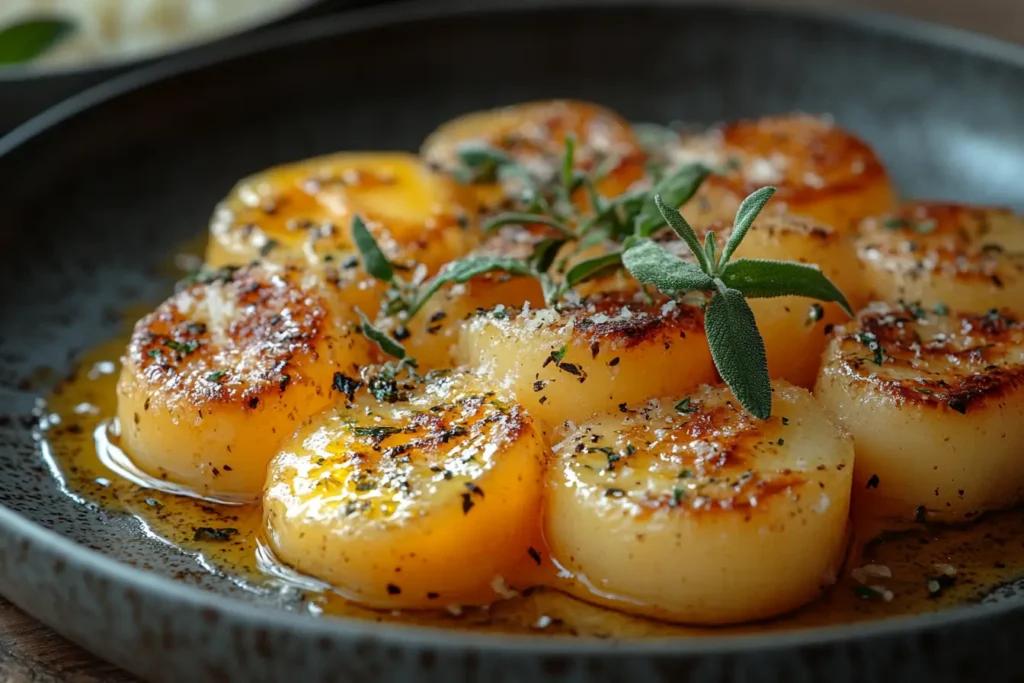
For a rustic treat, try tortelloni paired with a rich brown butter and sage sauce. Not only does the nutty richness of the butter elevate the flavor, but the earthiness of the sage also adds depth to the dish. Furthermore, this combination beautifully enhances the creamy, often vegetarian fillings of the tortelloni, making it a standout meal. In fact, it’s the culinary equivalent of wrapping yourself in a warm blanket on a chilly evening—a true comfort food experience. 🧣🍂
“Traditional recipes are like a time machine—they transport you to the heart of Italy with every bite.”
Creative Twists: Tortelloni Alfredo Bake
If you’re feeling experimental, why not turn tortelloni into a hearty bake? Layer cooked tortelloni with Alfredo sauce, sprinkle generously with mozzarella, and bake until bubbly and golden. It’s comfort food at its finest and perfect for feeding a crowd.
Internal Linking Opportunities
To enrich this article and provide additional resources for readers, consider linking to related content from Zeen Recipes. Here are some suggested anchor texts and links to integrate:
- “Chicken Tortelloni Alfredo” can link to Ultimate Guide to Chicken Tortelloni Alfredo. This would complement the section on pairing tortelloni with rich sauces.
- “Creative pasta recipes” can link to Chicken and Pasta, giving readers more ideas for tortellini and tortelloni dishes.
- “Perfect sauces for pasta” could link to Fix Marry Me Chicken Sauce, helping readers troubleshoot or enhance their sauces.
These links not only add value to your article but also improve SEO by encouraging readers to explore more content.
Conclusion: Celebrating the Diversity of Italian Pasta
Tortellini and tortelloni are more than just pasta—they’re tiny parcels of joy steeped in Italian tradition. From their distinct sizes and fillings to the myriad ways they can be served, these pasta varieties offer something for everyone. Whether you prefer the rich, comforting flavors of tortelloni or the delicate sophistication of tortellini, each bite takes you on a journey through Italy’s culinary heritage.
Furthermore, these pastas are incredibly versatile, making them perfect for both casual dinners and festive occasions. If you’re a fan of traditional recipes, there’s no shortage of inspiration to explore. On the other hand, for those who love experimenting, tortellini and tortelloni are the ideal canvases for creative twists.
So, the next time you’re at the dinner table or in the kitchen, remember this: tortellini and tortelloni aren’t just food—they’re a celebration of culture, flavor, and the simple pleasures of life. Ultimately, what matters most is savoring the experience and sharing it with loved ones. Buon appetito! 🍝

